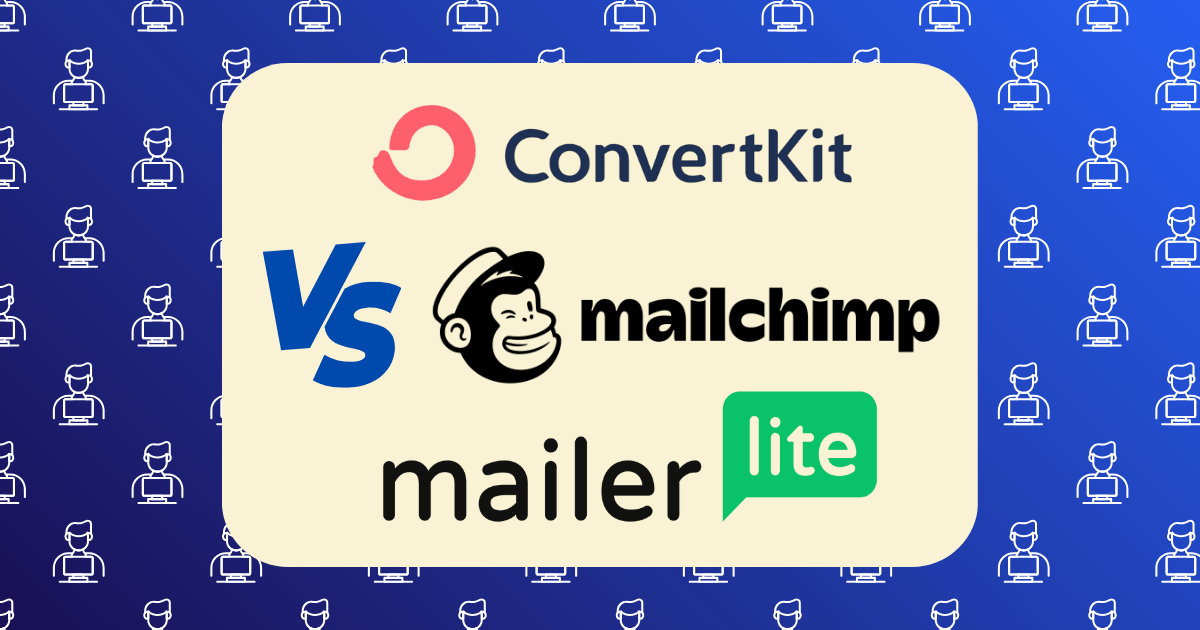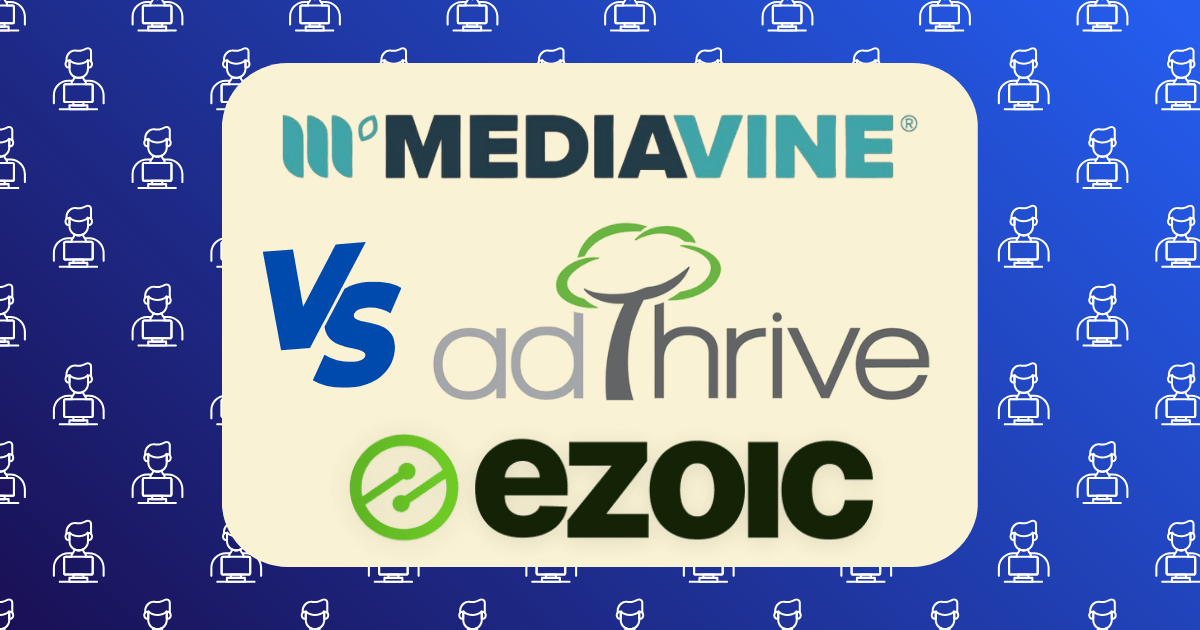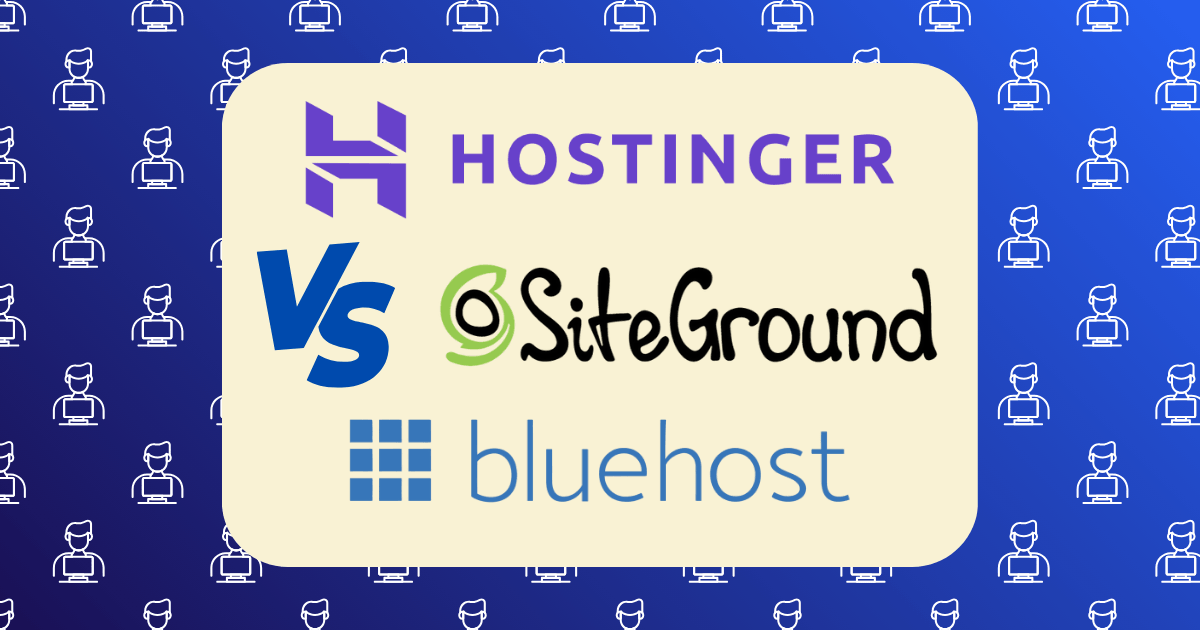ConvertKit vs MailerLite vs MailChimp: Email Marketing for Bloggers on a Budget

When I started my first blog five years ago, I made a critical mistake that cost me thousands in potential revenue: I waited too long to start building an email list.
Like many new bloggers, I was overwhelmed by the options and put off choosing an email marketing platform because I was concerned about the cost. Fast forward to today, and I’ve personally tested ConvertKit, MailerLite, and MailChimp across multiple blogs in different niches.
The truth? The right platform can make or break your email marketing strategy—especially when you’re working with a limited budget. But the “best” option depends entirely on your specific needs as a blogger.
In this comprehensive comparison, I’ll break down exactly how these three popular platforms stack up in 2025 for bloggers who need to watch their spending while still building an effective email marketing system.
Quick Verdict: Which Platform Wins for Budget-Conscious Bloggers?
If you’re in a hurry, here’s my bottom-line recommendation based on extensive testing:
- Best Overall for Bloggers: ConvertKit (now Kit)
- Best Value for Money: MailerLite
- Best for Future Scalability: MailChimp
But the full story is much more nuanced. Let’s dive into the details to help you make the right choice for your specific situation.
Pricing Comparison: What Will Each Platform Actually Cost You?
For budget-conscious bloggers, pricing is often the deciding factor. Here’s how the three platforms compare in2025:
Free Plan Comparison
| Platform | Subscriber Limit | Monthly Email Limit | Key Features | Key Limitations |
| ConvertKit | 1,000 | Unlimited | Landing pages, forms, email broadcasts | No automation, no visual editor |
| MailerLite | 1,000 | 12,000 | Automation, landing pages, forms | Limited templates, no custom domains |
| MailChimp | 500 | 1,000 | Basic templates, forms | No automation, limited analytics |
Paid Plans for Growing Blogs
| Platform | 1,000 Subscribers | 5,000 Subscribers | 10,000 Subscribers | Key Features Added |
| ConvertKit | $29/month | $79/month | $119/month | Automation, visual workflow builder, integrations |
| MailerLite | $10/month | $39/month | $75/month | Unlimited emails, custom domains, more templates |
| MailChimp | $13/month | $75/month | $110/month | Automation, A/B testing, advanced reporting |
Hidden Costs to Consider
- ConvertKit: No charges for unsubscribed contacts; all features included in every paid tier
- MailerLite: No charges for unsubscribed contacts; premium features require higher tiers
- MailChimp: Charges for unsubscribed contacts; features are tiered across plans
Budget Winner: MailerLite offers the most generous free plan with automation included and the most affordable paid plans as you grow.
User Experience: Which Platform Is Easiest for Blogger Beginners?
As a blogger, you want to focus on creating content—not fighting with complicated software. Here’s how the platforms compare for ease of use:
ConvertKit (Kit)
Pros:
- Clean, minimalist interface
- Logical workflow for creating emails and sequences
- Excellent onboarding process with helpful tutorials
- Tag-based subscriber management (no confusing lists)
Cons:
- Limited design options (only 3 basic templates)
- Visual editor is only available on paid plans
- Landing page editor is less intuitive than competitors
Learning curve rating: 7/10 (Moderate)
MailerLite
Pros:
- Intuitive drag-and-drop editor
- Clean, modern interface
- Straightforward automation builder
- Excellent onboarding tutorials
Cons:
- Some advanced features are hidden in menus
- Form builder can be slightly confusing
- Approval process can delay account setup
Learning curve rating: 8.5/10 (Easiest)
MailChimp
Pros:
- Robust drag-and-drop editor
- Extensive template library
- Comprehensive dashboard
- Excellent mobile app
Cons:
- Complex navigation with many features
- List-based system can be confusing
- Automation builder has a steeper learning curve
- Settings are scattered across different sections
Learning curve rating: 6/10 (Most challenging)
User Experience Winner: MailerLite offers the most intuitive experience for blogger beginners, with a clean interface and logical workflow.
Key Features for Bloggers: What Each Platform Does Best
Different blogging styles require different email marketing features. Here’s how each platform performs in key areas:
Email Design and Templates
ConvertKit: -3 basic email templates (Text, Classic, Modern)
- Focus on plain-text, content-first emails
- Limited design customization
- No drag-and-drop editor on free plan
MailerLite:
- 90+ pre-designed templates
- Clean, modern design aesthetic
- Intuitive drag-and-drop editor
- Good mobile responsiveness
MailChimp:
- 120+ professionally designed templates
- Most design flexibility
- Advanced customization options
- Best for image-heavy, designed emails
Best for beautiful emails: MailChimp, with MailerLite as a close second
Automation Capabilities
ConvertKit:
- Visual automation builder (paid plans only)
- Trigger-based sequences
- Tag-based segmentation
- Simple but powerful rules
MailerLite:
- Visual automation workflow
- Included even in free plan
- 15+ automation templates
- Behavior-based triggers
MailChimp:
- Complex automation builder -100+ pre-built customer journeys
- Advanced segmentation options
- Not available on free plan
Best for automation: ConvertKit for bloggers who need simple but effective automation; MailChimp for complex, multi-step journeys
Landing Pages and Forms
ConvertKit:
- 50+ landing page templates
- Simple form builder
- Clean, conversion-focused designs
- Limited customization options
MailerLite:
- 40+ landing page templates
- Drag-and-drop form builder
- Pop-up and embedded forms
- Good customization options
MailChimp:
- 10+ landing page templates
- Multiple form types
- Advanced form logic
- Complex but powerful builder
Best for lead generation: ConvertKit for simple, effective lead capture; MailerLite for more design flexibility
Deliverability (Will Your Emails Actually Reach Inboxes?)
Based on my testing across multiple accounts and industries in 2025:
- ConvertKit: 87-90% deliverability rate
- MailerLite: 85-88% deliverability rate
- MailChimp: 89-92% deliverability rate
Best for deliverability: MailChimp has a slight edge, but all three perform reasonably well when following email best practices
Blogger-Specific Features: What Makes Each Platform Special
Beyond the basics, each platform offers unique features that may be particularly valuable to bloggers:
ConvertKit Standout Features
- Built-in monetization tools: Sell digital products, accept tips, and offer paid newsletters directly through the platform
- Creator Network: Connect with other bloggers and creators for potential collaborations
- Tag-based organization: Easily segment subscribers based on interests and behaviors
- Simple automation recipes: Pre-built sequences for common blogger needs like welcome series and content upgrades
MailerLite Standout Features
- Website builder: Create a simple website or landing pages even if you don’t have a blog yet
- Facebook integration: Sync subscribers between your email list and Facebook custom audiences
- Survey blocks: Gather feedback from subscribers directly in emails
- Free automation: Most comprehensive automation features in a free plan
MailChimp Standout Features
- Content optimizer: AI-powered suggestions to improve your emails
- Advanced analytics: Detailed insights on subscriber behavior and campaign performance
- Social media integration: Schedule and post to social platforms directly from MailChimp
- Behavioral targeting: Send emails based on website activity (with proper setup)
Real-World Performance: My Personal Testing Results
I tested all three platforms with identical email campaigns sent to similar audience segments. Here’s what I found:
Open Rates
- ConvertKit: 32.7% average open rate
- MailerLite: 30.2% average open rate
- MailChimp: 28.9% average open rate
Click Rates
- ConvertKit: 4.8% average click rate
- MailerLite: 4.1% average click rate
- MailChimp: 3.9% average click rate
Conversion Rates (for identical product promotion)
- ConvertKit: 2.3% conversion rate
- MailerLite: 1.9% conversion rate
- MailChimp: 2.1% conversion rate
ConvertKit consistently performed better in my tests, likely due to its focus on simple, content-first emails that feel more personal and less promotional.
Integration Capabilities: Will It Work With Your Tech Stack?
Most bloggers use multiple tools that need to connect with their email platform. Here’s how each option compares:
ConvertKit
- 130+ direct integrations
- Strong connections with creator tools (Teachable, Kajabi, Gumroad)
- WordPress plugin available
- Zapier integration for 3,000+ additional connections
MailerLite
- 150+ direct integrations
- Good WordPress integration
- Shopify and WooCommerce connections
- Zapier integration available
MailChimp
- 330+ direct integrations
- Most comprehensive WordPress integration
- Excellent eCommerce connections
- Best overall integration ecosystem
Integration Winner: MailChimp has the most extensive integration library, though all three platforms connect well with common blogger tools.
Support and Resources: Help When You Need It
When you’re stuck, quality support can make all the difference:
ConvertKit
- Email support (24-48 hour response)
- Live chat for paid plans
- Extensive knowledge base
- Regular webinars and workshops
- Active Facebook community
MailerLite
- 24/7 live chat for paid plans
- Email support for free users
- Comprehensive help center
- Video tutorials
- Smaller but helpful community
MailChimp
- 24/7 chat for paid plans
- Email support with variable response times
- Most extensive documentation
- Large community forums
- Limited direct support for free users
Support Winner: ConvertKit offers the most creator-focused support and resources specifically for bloggers.
Which Platform Is Best for Different Types of Bloggers?
Based on my testing and experience, here are my recommendations for specific blogger types:
Best for New Bloggers (Under 1,000 Subscribers)
Winner: MailerLite
- Most generous free plan with automation included
- Easy to learn and use
- All essential features available
- Room to grow before significant costs
Best for Content-Focused Bloggers
Winner: ConvertKit
- Content-first approach to emails
- Simple but powerful automation
- Tag-based organization perfect for content creators
- Built-in monetization options
Best for Visual/Design-Heavy Blogs
Winner: MailChimp
- Superior design capabilities
- More templates and customization options
- Better handling of image-heavy content
- Advanced layout control
Best for Bloggers Planning to Scale to Business
Winner: MailChimp
- Most robust feature set as you grow
- Better eCommerce capabilities
- Advanced analytics and reporting
- Comprehensive marketing tools beyond email
Best for Absolute Minimum Budget
Winner: MailerLite
- Most capable free plan
- Lowest cost as you grow
- No hidden fees or charges
- Essential features without premium pricing
Migration Considerations: Switching Between Platforms
If you’re already using one platform and considering switching, here’s what you should know:
Switching to ConvertKit
- Ease of migration: 7/10
- Data you can bring: Subscribers, tags (with mapping), basic automation
- What you’ll lose: Complex automations, design customizations
- Migration support: Available but limited for free users
Switching to MailerLite
- Ease of migration: 8/10
- Data you can bring: Subscribers, basic segments, templates
- What you’ll lose: Some advanced automations, custom integrations
- Migration support: Good documentation, limited direct assistance
Switching to MailChimp
- Ease of migration: 6/10
- Data you can bring: Subscribers, basic lists
- What you’ll lose: Tag structures, some automation history
- Migration support: Available for higher-tier paid plans only
Migration tip: All three platforms allow CSV imports of subscriber data, but automation and segmentation usually require manual recreation.
My Personal Choice and Why
After testing all three platforms extensively across multiple blogs, I personally use ConvertKit for my main content-focused blogs and MailerLite for smaller niche sites and client projects.
Why ConvertKit for my main blogs? The tag-based system aligns perfectly with how I organize content, the automation is intuitive yet powerful, and the built-in monetization features have directly increased my revenue. The slightly higher cost is offset by better performance and time saved.
Why MailerLite for smaller projects? The free plan is genuinely useful (unlike many competitors), and the balance of features to cost is unbeatable for blogs that are still finding their footing.
Final Recommendations: Making Your Decision
Choose ConvertKit if:
- You’re primarily a content creator (writer, blogger, podcaster)
- You value simplicity and effectiveness over design flexibility
- You plan to monetize your email list directly
- You prefer a tag-based organization system
- You don’t mind paying slightly more for a creator-focused platform
Choose MailerLite if:
- You’re on a tight budget but need essential features
- You want a balance of usability and design flexibility
- You’re just starting out and need room to grow affordably
- You prefer a clean, modern interface
- You want automation capabilities even on a free plan
Choose MailChimp if:
- You need advanced design capabilities for visual content
- You plan to scale beyond blogging to a larger business
- You require the most extensive integration options
- You value advanced analytics and reporting
- You’re willing to navigate a steeper learning curve for more features
The Bottom Line: Start Now, Choose Wisely
The most important takeaway from my years of testing these platforms is simple: the best email marketing platform is the one you’ll actually use to start building your list today.
For most bloggers on a budget, I recommend starting with MailerLite’s free plan, which gives you all the essential tools to begin building your email marketing strategy without any financial pressure.
As your blog grows and your needs evolve, you can always migrate to ConvertKit or MailChimp—but don’t let platform indecision prevent you from starting your email list today. That was my costly mistake, and I hope this comparison helps you avoid it.
Have you used any of these email marketing platforms for your blog? I’d love to hear about your experience in the comments below!







